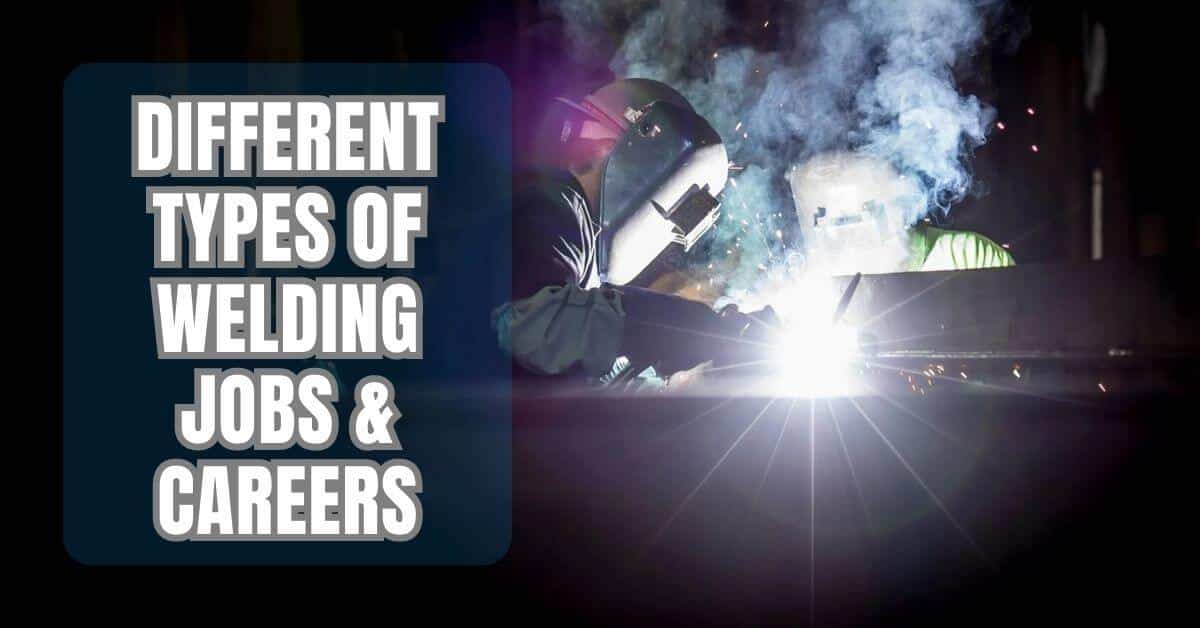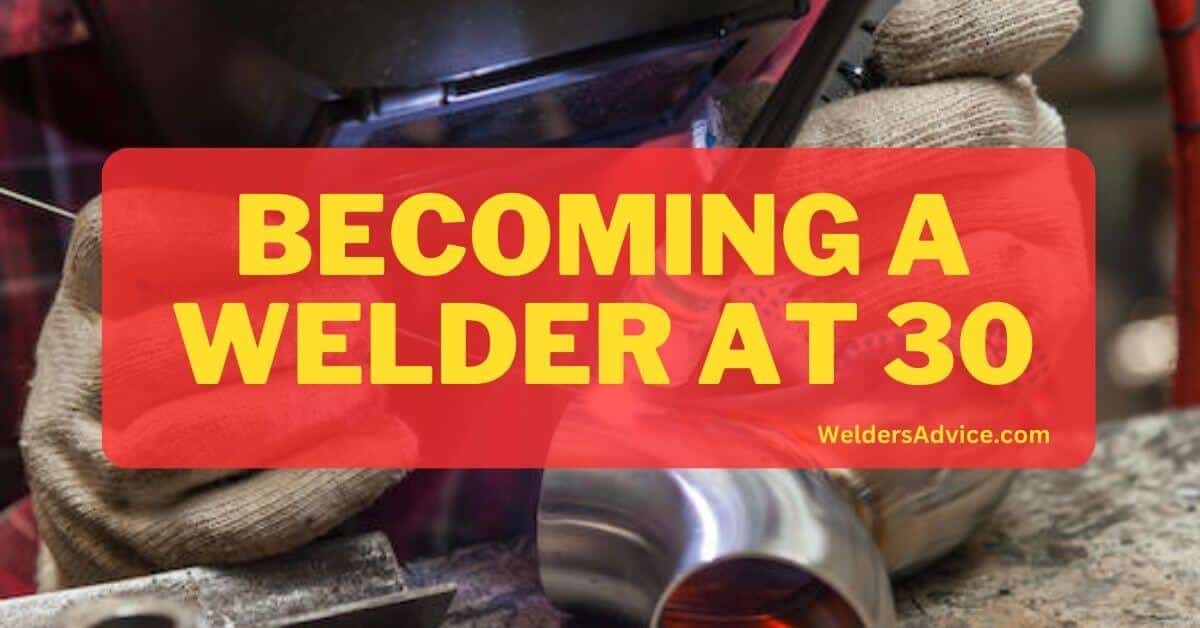Welders use various types of welding equipment to perform their job, and they may specialize in one particular type or work with many different kinds. There are several different types of welding jobs available, including structural steel welders, stainless steel welders, brazing machine operators, pipefitters & plumbers, sheet metal workers, and underwater welders. Let’s discuss more Different Types of Welding Jobs & Careers.
- Different Types of Welding Jobs & Careers
- What Types of Welding Can You Do for a Career?
- What is the Highest Paid Welding Job?
- What Type of Welder is in High Demand?
- What are the 8 Types of Welding?
- 1. Oxyfuel welding (OFW)
- 2. Shielded metal arc welding (SMAW)
- 3. Gas tungsten arc welding (GTAW or TIG)
- 4. Flux Cored Arc Welding
- 5. Submerged arc welding (SAW)
- 6. Plasma arc cutting/welding
- 7. Electron beam welding
- 8. Laser-beam welding.
- Welding Jobs Salary
- Alternative Careers for Welders
- Highest Paying Welding Jobs
- Welding Career Paths
- Final Thoughts
Different Types of Welding Jobs & Careers
Each career requires its own specialized skillset and training. Let’s get some knowledge about Different Types of Welding Jobs & Careers. If you want to become a welder then you need to know about these.
Structural Steel Welders
Structural steel welders typically join large sections of steel. Used in the construction industry while stainless steel welders connect components made from corrosion-resistant alloys. These are for food processing machinery and medical devices. Brazing machine operators heat small parts with a torch before soldering them together for automotive repairs or other assemblies requiring precision workmanship.
Pipefitters & Plumbers
Pipefitters & plumbers install heating systems, gas lines, and water systems which require additional welding knowledge as well as plumbing experience to ensure proper installation techniques are followed correctly.
Sheet Metal
Sheet metal workers construct products from thin sheets of aluminum or copper utilizing hand tools such as shears and press brakes along with arc welding machines to form complex shapes for air conditioning ducts found in buildings throughout the country.
Underwater Welders
Lastly, underwater welders go deep below the surface to join metal structures like bridges on shorelines or offshore oil rigs often having to contend with freezing temperatures during this process adding an extra element of difficulty compared to most other types listed here today!
Certified Inspectors
Welders also have the opportunity to become certified inspectors, which means they can ensure quality control and safety standards are met when working with materials. Whether you’re looking for a full-time job or just want to make some extra money on the side, there’s sure to be an ideal welding job for you!
What Types of Welding Can You Do for a Career?
Welding is a lucrative and versatile career path that offers individuals the opportunity to pursue various types of welding. Welders can specialize in arc welding, oxy-fuel welding, flux-cored arc welding (FCAW), gas tungsten arc welding (GTAW), shielded metal arc welding (SMAW), plasma cutting, and gas metal arc welding (GMAW). Arc welders use an electric current between two electrodes to create heat for melting metals together.
Oxy-fuel
Oxy-fuel welders use pressurized fuel gases to melt base metals.
FCAW
FCAW uses a continuously fed electrode wire that provides its own shielding from the atmosphere.
GTAW
GTAW requires separate filler material because it relies on non-consumable tungsten electrodes.
SMAW
SMAW involves using consumable sticks or covered electrodes with flux coating to join pieces of metal together.
Plasma Cutting
Plasma cutting uses high-velocity ionized gas which is directed through a constricted opening at the workpiece in order to cut the material into desired shape and size.
GMAW
GMAW utilizes an electric arc created between the workpiece and a consumable wire electrode in order to generate enough heat for joining materials together as well as providing additional filler material if needed.
This type of career offers job security along with steady income potential due to its versatility across different types of industries making it one of the most sought-after professions today!
What is the Highest Paid Welding Job?
Welders are some of the most in-demand professionals in today’s job market, and they can make a good living if they specialize in certain areas. The highest-paid welding job is generally considered to be that of an underwater welder. These welders work in extreme environments, often at depths below 50 feet making it one of the most challenging welding jobs out there.
This type of welding requires specialized skills and tools not used by welders on dry land and therefore comes with a hefty salary. Underwater welders can make from $50,000 up to $180,000 per year depending on their level of experience and certifications. Such as AWS D3.6M or ADCI Diver Welding certification which is required for deeper dives where greater pressure exists underwater.
So if you’re looking for a career change or want to get into the trade then consider becoming an underwater welder – it may just be your best bet!
What Type of Welder is in High Demand?
Welders are an essential part of many construction and manufacturing operations. And the type of welder that is in high demand depends on the job. The most common types of welders used today are stick welders, MIG (metal inert gas) welders, TIG (tungsten inert gas) welders, and plasma arc cutters.
- Stick welding is a manual process that uses a consumable electrode to create an electric arc to join two pieces together; it’s commonly used for general fabrication work.
- MIG welding uses a spool gun that feeds metal wire through its nozzle as it creates an arc with electricity; this makes it ideal for heavier projects like automotive maintenance or industrial line production.
- TIG welding requires more skill due to its precise nature; this method utilizes a non-consumable tungsten electrode fed into molten material while shielding it with argon gas to produce neat, detailed results.
- Lastly, Plasma Arc Cutters use high-velocity ionized gases to cut through metal materials quickly and accurately at extremely high temperatures. They’re often found in sheet metal shops or other fabrication facilities where clean cuts are needed fast.
Each type of welder has its own unique set of advantages and disadvantages based on the project requirements so choosing the right one can be tricky – but whichever you choose will certainly be in high demand!
Also Read: Best Flux Core Welder Under 300
What are the 8 Types of Welding?
Welding is used in a variety of industries, from automotive manufacturing to aerospace engineering. There are 8 main types of welding processes:
1. Oxyfuel welding (OFW)
Oxyfuel Welding is the most common type of professional welder’s use and involves burning fuel like acetylene with oxygen to create a flame hot enough to melt metals for joining purposes.
2. Shielded metal arc welding (SMAW)
Shielded Metal Arc Welding uses an electric current flowing through an electrode which also melts the metals being joined; this process has been around since the late 1800s and remains popular today due to its easy setup requirements and low-cost equipment needs.
3. Gas tungsten arc welding (GTAW or TIG)
Gas Tungsten Arc Welding requires high levels of skill as it relies on pinpoint accuracy when directing an electrical current onto two pieces of metal; however, it results in very clean welds free from contaminants such as oxides or other impurities found in other forms of traditional steel-joining techniques.
4. Flux Cored Arc Welding
Flux Cored Arc Welding works similarly but uses self-shielded electrodes which require no external shielding gases making setup faster than GTAW while still producing strong weld joints without spatter or slag needing removal like SMAW does.
5. Submerged arc welding (SAW)
Submerged Arc Welding utilizes a blanket covering granular material directly over the joint being made so molten droplets remain contained within; this creates much deeper penetration capabilities allowing thicker sections to be joined together securely with minimal cleanup afterward.
6. Plasma arc cutting/welding
Plasma Arc Cutting/Welding utilizes high temperatures produced by unexpanded gas jets for quickly cutting large sections out efficiently with minimal heat-affected zones left behind on edges near cuts while still providing a quality finish surface ideal for further machining tasks if required.
7. Electron beam welding
Electron Beam Welding’s unique ability comes from its concentrated energy source delivered via accelerated electrons rather than sparks generated like all other methods where they can cause some warping upon cooling due to their scattering across wider areas after release.
8. Laser-beam welding.
Lastly, Laser Beam Welder offers similar precision focusing abilities but at higher speeds creating stronger bonds between components compared to EBWs despite both using intense energy beams focused onto workpieces simultaneously.
Welding Jobs Salary
Welding jobs are in high demand and can be financially rewarding. According to the Bureau of Labor Statistics, welders earned a median salary of $43,000 per year as of April 2023. Those with more experience may earn up to $54,000 annually or higher depending on their industry and region.
Additionally, many welding professionals receive benefits such as healthcare coverage or retirement plans that further supplement income.
Also Read: Best Welding Caps Review
Alternative Careers for Welders
Welders have the skills and experience to work in a variety of industries beyond welding. Alternative careers for welders include machinists, fabricators, pipefitters, electricians, mechanics, metalworkers and industrial designers. These roles involve similar tasks to welding such as cutting and shaping metal parts or components.
Welders may also take on more specialized roles such as inspecting or repairing equipment used in manufacturing processes. With their knowledge of metals and how they interact with other materials like plastics or composites, welders can even move into engineering fields such as aerospace engineering or automotive design.
Highest Paying Welding Jobs
Welding is a sought-after skilled profession that can provide lucrative salaries and job security. The highest-paying welding jobs are typically found in the oil and gas industry, where welders may earn up to $90 an hour. In contrast, construction welders often make around $20 per hour.
Other highly paid welding professions include aerospace welding and underwater welding, both of which can offer salaries upwards of $75 an hour with additional bonuses or incentives.
Welding Career Paths
Welding is an in-demand trade and a great career choice for those looking for creative, challenging work. There are many different welding career paths available, including becoming a pipeline welder, shipbuilding welder, fabrication welder, or construction welder. With the right training and skillset, welders can make good money while working on interesting projects that often involve travel.
Additionally, welders may find opportunities to branch out into related fields such as engineering or design with additional education and experience.
Also Read: Best Flux Core Welders
Final Thoughts
Welding is a versatile career that offers a variety of jobs and opportunities. Whether you are looking to become an industrial welder or pursue more specialized roles in the field, there is something for everyone. With all the different types of welding out there, it’s easy to find something that suits your skillset and interests.
Those who choose to pursue this career will benefit from job security as well as financial rewards. Hope you understood the Different Types of Welding Jobs & Careers.




